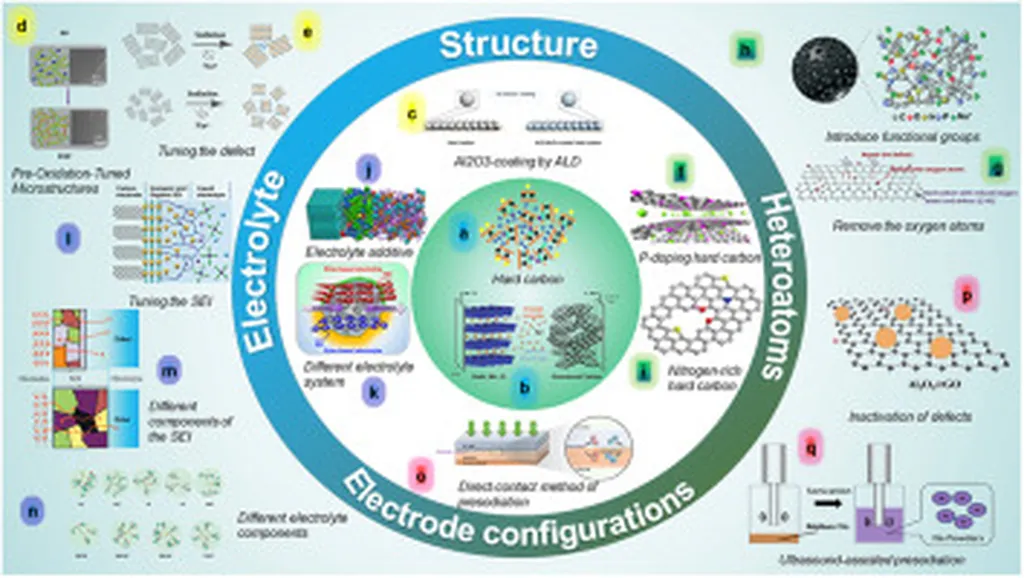In a significant stride toward enhancing the performance of all-solid-state sodium metal batteries, researchers have introduced an innovative electrostatic engineering strategy. This approach, detailed in a recent study published in *Nano Letters and Micro Letters*, focuses on regulating the sodium-ion (Na+) coordination structure using a fluorinated metal–organic framework. The research, led by Penghui Song of the Key Laboratory of Synthetic and Biological Colloids at Jiangnan University, promises to address critical challenges in the energy sector by improving the stability and efficiency of sodium-based energy storage systems.
The study highlights the use of electron-rich fluorinated sites to accelerate the disassociation of sodium salts while incorporating anions into the Na+ coordination structure. This electrostatic effect weakens the Na–O coordination, thereby facilitating rapid Na+ transport. “By engineering the electrostatic interactions, we can create an anion-rich, weak Na+ solvation structure that not only enhances Na+ transport kinetics but also contributes to a highly stable inorganic-rich solid–electrolyte interphase,” explains Song. This stability is crucial for the long-term performance of sodium metal batteries, as it significantly reduces interfacial degradation.
The practical implications of this research are substantial. The team demonstrated that a Na/Na symmetric cell could achieve stable Na plating/stripping over 2,500 hours, while all-solid-state sodium metal batteries maintained stable performance for over 2,000 cycles at a high rate of 2 C, with nearly 100% capacity retention. These results underscore the potential of electrostatic engineering to revolutionize the energy storage landscape.
For the energy sector, this breakthrough could pave the way for more reliable and efficient sodium-based energy storage solutions. Sodium metal batteries are particularly attractive due to the abundance and low cost of sodium compared to lithium, making them a viable alternative for large-scale energy storage applications. “This research opens up new avenues for designing advanced electrolytes and interfaces that can support the next generation of high-performance, cost-effective batteries,” Song adds.
As the world continues to seek sustainable and scalable energy solutions, innovations like this one are critical. The study not only advances our understanding of interfacial chemistry and Na+ transport kinetics but also sets a foundation for future developments in all-solid-state sodium metal batteries. With further research and development, this technology could play a pivotal role in shaping the future of energy storage, contributing to a more sustainable and energy-efficient world.

